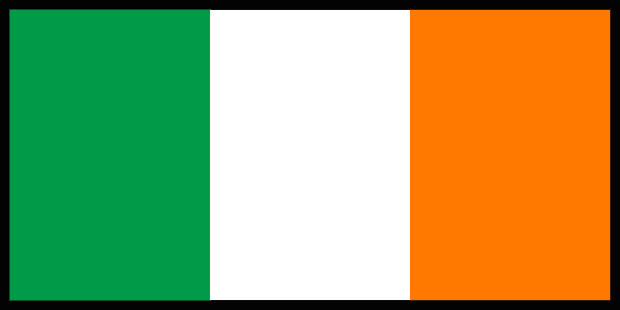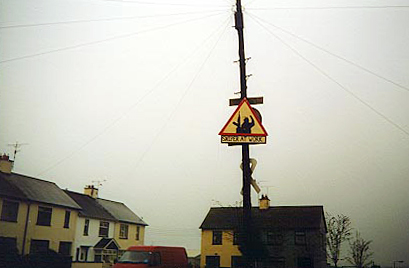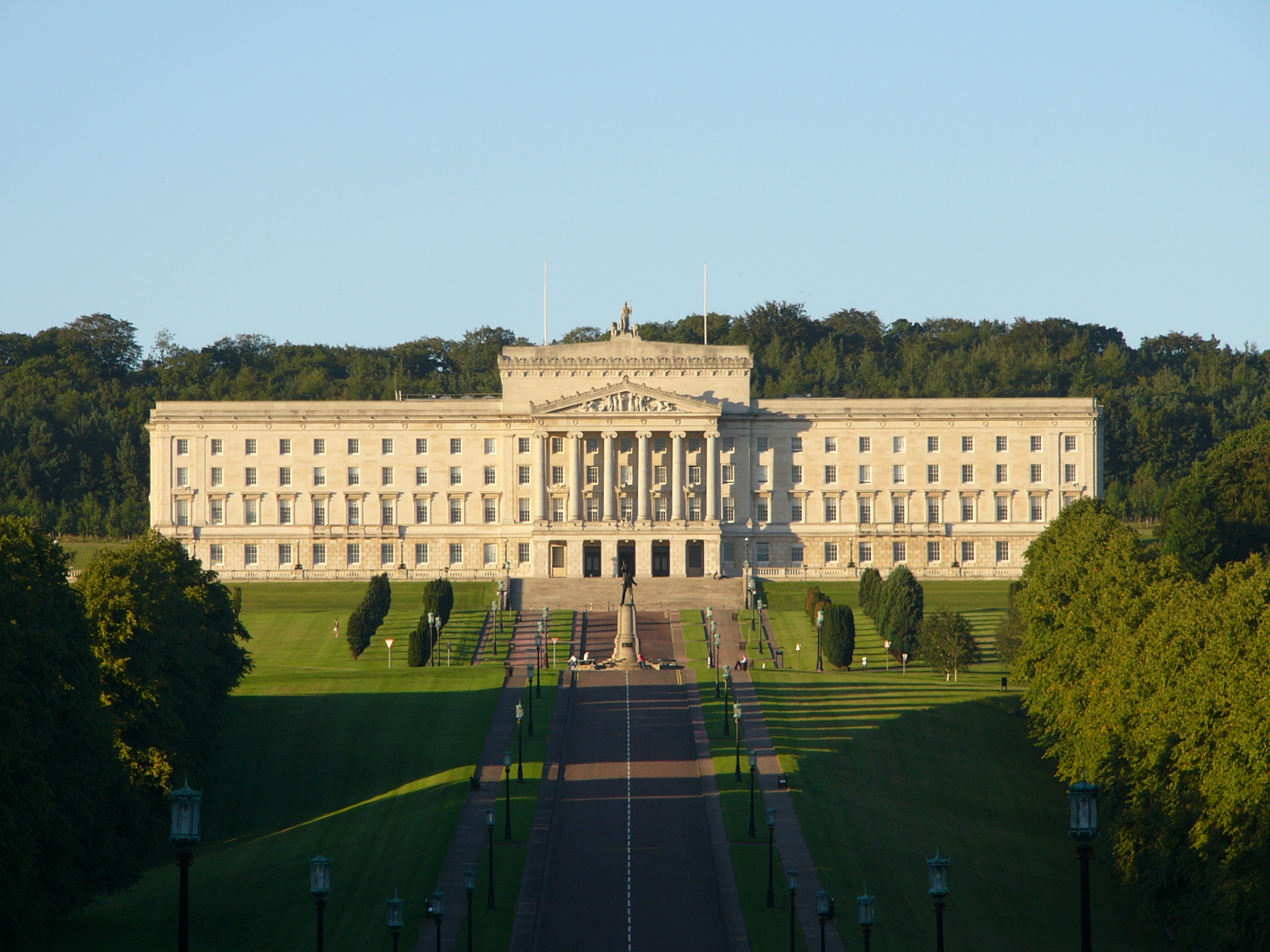|
Attack On Cloghoge Checkpoint
The attack on Cloghoge checkpoint was an unconventional railway bomb attack carried out on 1 May 1992 by the Provisional Irish Republican Army (IRA) against a British Army permanent vehicle checkpoint, manned at the time by members of the Royal Regiment of Fusiliers. The IRA's South Armagh Brigade fitted a van with train wheels that allowed it to move along a railway line. A large bomb was placed inside the van, which was then driven along the railway line to the target. The explosion killed one British soldier and injured 23 others. The complex, just north of the village of Cloghoge in County Armagh, on the southern outskirts of Newry, was utterly destroyed. The attack During the late hours of 30 April, a group of four Provisional IRA members held a family hostage in Killeen, County Armagh, and stole a mechanical excavator. This was to be used to build a makeshift ramp up to the Dublin–Belfast railway line, which drew parallel to the Dublin–Belfast motorway (M1). A ... [...More Info...] [...Related Items...] OR: [Wikipedia] [Google] [Baidu] |
The Troubles
The Troubles ( ga, Na Trioblóidí) were an ethno-nationalist conflict in Northern Ireland that lasted about 30 years from the late 1960s to 1998. Also known internationally as the Northern Ireland conflict, it is sometimes described as an "irregular war" or "Low-intensity conflict, low-level war". The conflict began in the late 1960s and is usually deemed to have ended with the Good Friday Agreement of 1998. Although the Troubles mostly took place in Northern Ireland, at times violence spilled over into parts of the Republic of Ireland, England and mainland Europe. The conflict was primarily political and nationalistic, fuelled by historical events. It also had an Ethnic group, ethnic or sectarian dimension but despite use of the terms 'Protestant' and 'Catholic' to refer to the two sides, it was not a Religious war, religious conflict. A key issue was the Partition of Ireland, status of Northern Ireland. Unionism in Ireland, Unionists and Ulster loyalism, loyalists, who for ... [...More Info...] [...Related Items...] OR: [Wikipedia] [Google] [Baidu] |
M1 Motorway (Republic Of Ireland)
The M1 motorway ( ga, Mótarbhealach M1) is a motorway in Ireland. It forms the large majority of the N1 national primary road connecting Dublin towards Belfast along the east of the island of Ireland. The route heads north via Swords, Drogheda and Dundalk to the Northern Irish border just south of Newry in County Armagh, where it joins the A1 road and further on, the M1 motorway in Northern Ireland. It also forms a significant part of the road connection between Dublin and the Northern Irish cities of Newry, and Lisburn. The route is part of European route E01. Route Almost the entire length of the N1 has been upgraded to motorway standard and is designated the M1 motorway. It runs from the Junction 3 of the M50 ring road in Dublin, past Cloghran, Swords, Balbriggan, Drogheda and Dundalk before ending at Ballymascanlon north of Dundalk. It by-passes many towns through which the N1 travelled. The original N1 route now forms the R132. At Ballymascanlon, it becomes the N1 dual ... [...More Info...] [...Related Items...] OR: [Wikipedia] [Google] [Baidu] |
Glenanne Barracks Bombing
The Glenanne barracks bombing was a large truck bomb attack carried out by the Provisional IRA against a British Army (Ulster Defence Regiment) base at Glenanne, near Mountnorris, County Armagh. The driverless lorry was rolled down a hill at the rear of the barracks and crashed through the perimeter fence. The bombing took place on 31 May 1991 and left three soldiers killed and 14 people wounded, four of them civilians. Background The bombing took place at a time when the Northern Ireland Office arranged multi-party talks (known as the Brooke/Mayhew talks) on the future of Northern Ireland. Sinn Féin members were not invited to attend because of their links with the IRA, which prevented them from being recognised as a 'constitutional' party. The talks ended in failure soon after. Built in 1972, the barracks housed two companies of the 2nd Battalion of the Ulster Defence Regiment (UDR). Seen as an outpost, it sat on the dividing line between a Protestant area and a Catholic are ... [...More Info...] [...Related Items...] OR: [Wikipedia] [Google] [Baidu] |
Attack On Derryard Checkpoint
On 13 December 1989 the Provisional Irish Republican Army (IRA) attacked a British Army permanent vehicle checkpoint complex manned by the King's Own Scottish Borderers (KOSB) near the Northern Ireland–Republic of Ireland border at Derryard townland, a few miles north of Rosslea, County Fermanagh. The IRA unit, firing from the back of an armoured dump truck, attacked the small base with heavy machine-guns, grenades, anti-tank rockets and a flamethrower. A nearby Army patrol arrived at the scene and a fierce firefight erupted. The IRA withdrew after leaving a van bomb inside the complex, but the device did not fully detonate. The assault on the outpost left two soldiers dead and two wounded. Planning According to journalist Ed Moloney, the IRA Army Council, suspecting a great deal of infiltration by double agents at the grassroots level of the IRA, decided to form an experimental flying column (instead of the usual active service unit) to mount a large-scale operation ... [...More Info...] [...Related Items...] OR: [Wikipedia] [Google] [Baidu] |
Chronology Of Provisional Irish Republican Army Actions (1992–1999)
This is a chronology of activities by the Provisional Irish Republican Army (IRA), from 1992 to 1999. 1992 January–February *1 January 1992: **a gun battle occurred between British troops and an IRA unit at the Royal Ulster Constabulary (RUC) barracks in Pomeroy, County Tyrone.''Fortnight'', Issue 303, pp. 30–31. Fortnight Publications, 1991. **two British soldiers and four civilians were injured when coffee jar bombs were thrown at patrols in separate attacks on the Falls Road and Oldpark Road, Belfast.''Irish Independent'', 2 January 1992. **IRA units fired on British security forces, who returned fire, in several areas of Belfast. **incendiary devices severely damaged a clothes shop in Belfast city centre. **an incendiary device caused minor damage to a hardware store in Belfast.O'Brien, p. 218 **incendiary devices destroyed a store in Newtownards, County Down. The fire spread to an adjoining garage and damaged several cars. *2 January 1992: **an incendiary device ig ... [...More Info...] [...Related Items...] OR: [Wikipedia] [Google] [Baidu] |
Good Friday Agreement
The Good Friday Agreement (GFA), or Belfast Agreement ( ga, Comhaontú Aoine an Chéasta or ; Ulster-Scots: or ), is a pair of agreements signed on 10 April 1998 that ended most of the violence of The Troubles, a political conflict in Northern Ireland that had prevailed since the late 1960s. It was a major development in the Northern Ireland peace process of the 1990s. It is made up of the Multi-Party Agreement between most of Northern Ireland's political parties, and the BritishIrish Agreement between the British and Irish governments. Northern Ireland's present devolved system of government is based on the agreement. Issues relating to sovereignty, governance, discrimination, military and paramilitary groups, justice and policing were central to the agreement. It restored self-government to Northern Ireland on the basis of "power sharing" and it included acceptance of the principle of consent, commitment to civil and political rights, cultural parity of esteem, police r ... [...More Info...] [...Related Items...] OR: [Wikipedia] [Google] [Baidu] |
Ministry Of Defence (United Kingdom)
The Ministry of Defence (MOD or MoD) is the department responsible for implementing the defence policy set by His Majesty's Government, and is the headquarters of the British Armed Forces. The MOD states that its principal objectives are to defend the United Kingdom of Great Britain and Northern Ireland and its interests and to strengthen international peace and stability. The MOD also manages day-to-day running of the armed forces, contingency planning and defence procurement. The expenditure, administration and policy of the MOD are scrutinised by the Defence Select Committee, except for Defence Intelligence which instead falls under the Intelligence and Security Committee of Parliament. History During the 1920s and 1930s, British civil servants and politicians, looking back at the performance of the state during the First World War, concluded that there was a need for greater co-ordination between the three services that made up the armed forces of the United Kingdom: t ... [...More Info...] [...Related Items...] OR: [Wikipedia] [Google] [Baidu] |
Sangar (fortification)
A sangar (or sanger) ( fa, سنگر) is a temporary fortified position with a breastwork originally constructed of stones, and now built of sandbags, gabions or similar materials. Sangars are normally constructed in terrain where the digging of trenches would not be practicable. The term is still frequently used by the British Army, but has now been extended to cover a wider range of small fortified positions. Etymology The word was adopted from Hindi and Pashto and derives originally from the Persian word ''sang'', "stone". Its first appearance in English (as recorded by the ''Oxford English Dictionary'') is in the form ''sunga'', and dates from 1841. The word has also occasionally been used as a verb, meaning "to fortify with a sangar": however, this usage appears to have been limited to the first decade of the 20th century. Traditional usage The term was originally used by the British Indian Army to describe small temporary fortified positions on the North West Frontier and ... [...More Info...] [...Related Items...] OR: [Wikipedia] [Google] [Baidu] |
Garda Síochána
(; meaning "the Guardian(s) of the Peace"), more commonly referred to as the Gardaí (; "Guardians") or "the Guards", is the national police service of Ireland. The service is headed by the Garda Commissioner who is appointed by the Irish Government. Its headquarters are in Dublin's Phoenix Park. Since the formation of the in 1923, it has been a predominantly unarmed force, and more than three-quarters of the force do not routinely carry firearms. As of 31 December 2019, the police service had 14,708 sworn members (including 458 sworn Reserve members) and 2,944 civilian staff. Operationally, the is organised into four geographical regions: the East, North/West, South and Dublin Metropolitan regions. The force is the main law enforcement agency in the state, acting at local and national levels. Its roles include crime detection and prevention, drug enforcement, road traffic enforcement and accident investigation, diplomatic and witness protection responsibilities. It also pro ... [...More Info...] [...Related Items...] OR: [Wikipedia] [Google] [Baidu] |
Bogie
A bogie ( ) (in some senses called a truck in North American English) is a chassis or framework that carries a wheelset, attached to a vehicle—a modular subassembly of wheels and axles. Bogies take various forms in various modes of transport. A bogie may remain normally attached (as on many railroad cars and semi-trailers) or be quickly detachable (as the dolly in a road train or in railway bogie exchange); it may contain a suspension within it (as most rail and trucking bogies do), or be solid and in turn be suspended (as most bogies of tracked vehicles are); it may be mounted on a swivel, as traditionally on a railway carriage or locomotive, additionally jointed and sprung (as in the landing gear of an airliner), or held in place by other means (centreless bogies). In Scotland, the term is used for a child’s (usually home-made) wooden cart. While ''bogie'' is the preferred spelling and first-listed variant in various dictionaries, bogey and bogy are also used. Rai ... [...More Info...] [...Related Items...] OR: [Wikipedia] [Google] [Baidu] |





_(Tony_Radakin_cropped).jpg)

